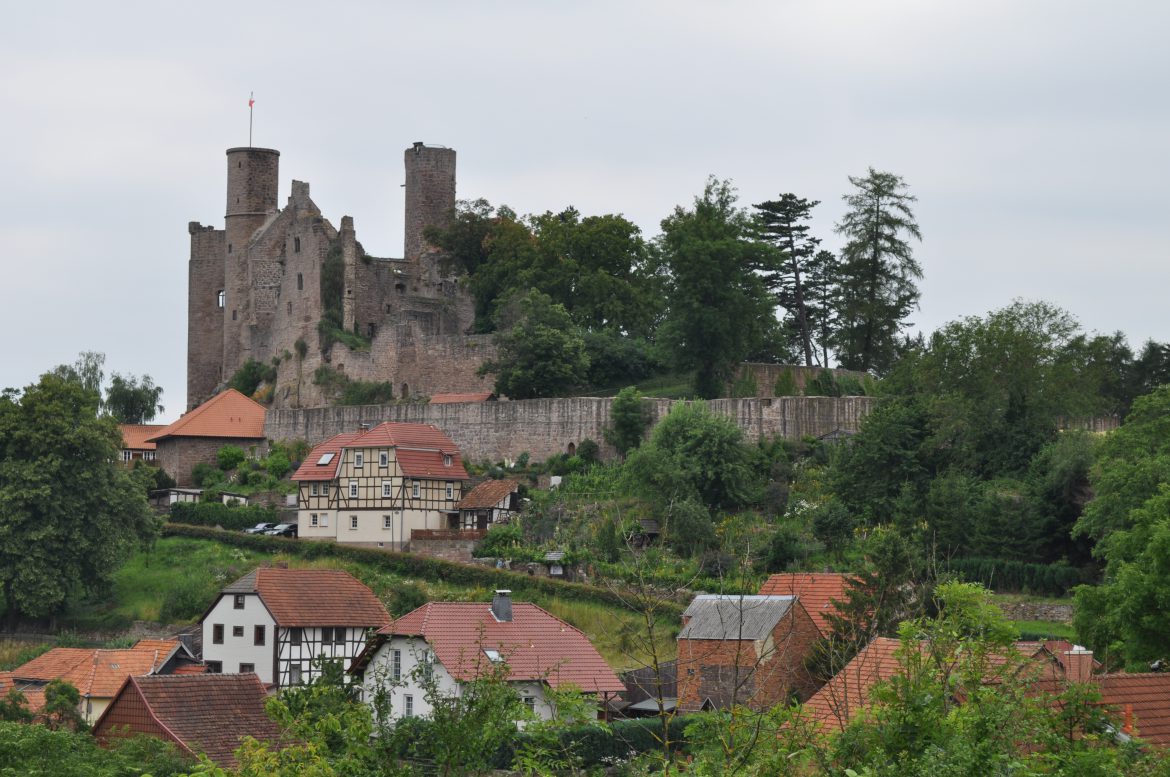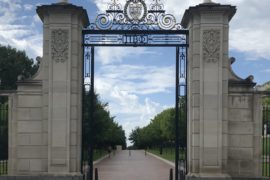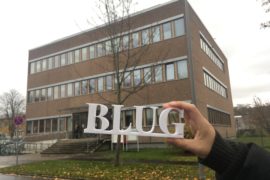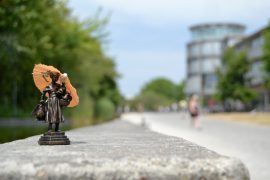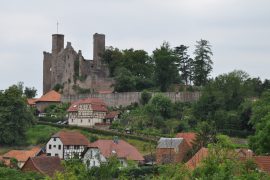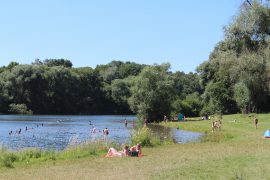It’s a steep path into a bygone past. A small road leads me past meadows and fields to a place that looks back upon a history of almost a thousand years: the castle ruin Hanstein.
Above the rooftops of the cozy timber frame village of Bornhagen lies Hanstein. It is located in the heart of the border triangle between Hessen, Thuringia and Lower Saxony. The ruin is said to be one of the biggest in central Germany – and it has always been a favorite destination for excursions of Göttingen’s students.
It is a sultry and warm summer day, and I am on my way to visit one of the most exciting, yet often overlooked cultural monuments of our region. The sweat runs down my forehead, as I finally reach the inner courtyard of the castle. Steps lead into the basement, light is missing. The lamp of my cellphone allows me to see some shallow contours.
People without claustrophobia might also climb the narrow stone staircase of the northern tower. On its top, the wind is blowing heavily, cooling me down a little bit. And the view is incredible: The northern part of the valley is enclosed by Göttingen’s mountains, the west is dominated by the High Meißner, and all around Hanstein are the forests of Thuringia.
Cars, traffic, noise? Negative. For a few minutes I rest here and enjoy the marvelous views.
There are countless castles and fortresses in Germany. Most of them are polished and restored for their visitors and (apart from their façade) haven’t got much in common with their medieval past anymore. Hanstein is different. During the Thirty Years’ War the castle was devastated by Swedish troops. The inhabitants fled and nature step by step re-conquered the masonry. The Hanstein family, however, still used the ruin as a meeting point, and even added a new grand hall in the 19th century.
But let’s go back to a more recent past. Due to its very special location within the inner-German border, Hanstein was used as an observation post by the GDR. After the fall of the wall, Hanstein has passed into communal ownership. Today, the ruin is restored again and again, without changes to its original character. Hanstein shall be preserved as a historic monument.
Not far away from Hanstein, on the hessian side, lies another castle called Ludwigstein. Tradition has it that it was built by the devil in just one night. It is, however, more likely that the hessian landgrave ordered Ludwigstein to be built around 1415 to combat the threat of robber barons. Today, the fortress is used as a youth hostel.
Exceptionally motivated folks can hike on a special trail from Hanstein to Ludwigstein – this would, however, take at least three hours.
I rather decide to have a look at the restored knights’ hall. Long tables, a lot of wood, and a heavy chandelier hanging from the ceiling. No sound of the outside world reaches through the thick walls. This is how life might have looked like many hundreds of years ago.
Once every year, the ruin takes its visitors into this long bygone past: Every first weekend of August, a medieval festival takes place in and around the castle. 13 000 visitors then flood the park around the ruin. This is how I got to know Hanstein in the middle of the 90s: I was impressed by the colourful hustle, the smell of twist bread, the men in their cowls and the women in their robes.
When I finally descend the steep trail to the sleepy village of Bornhagen, I can’t help but think that probably just a fraction of Göttingen students has ever seen Hanstein. Using the semester ticket, reaching the place isn’t even (very) difficult: The regional trains take you directly to Witzenhausen (direction: Kassel), from where it’s just a mere 11 kilometers by bike. A rewarding tour into a long bygone world. I promise.

